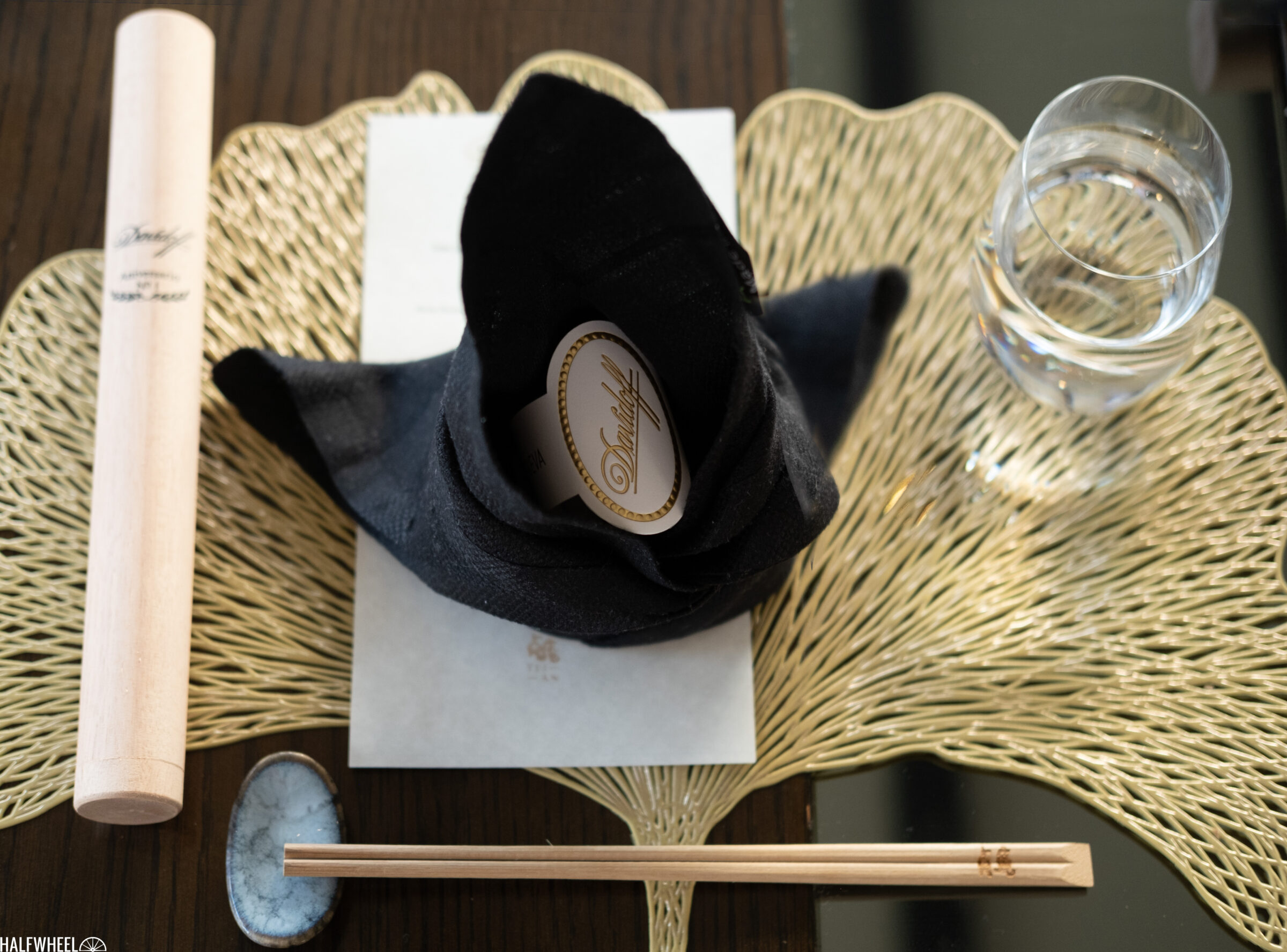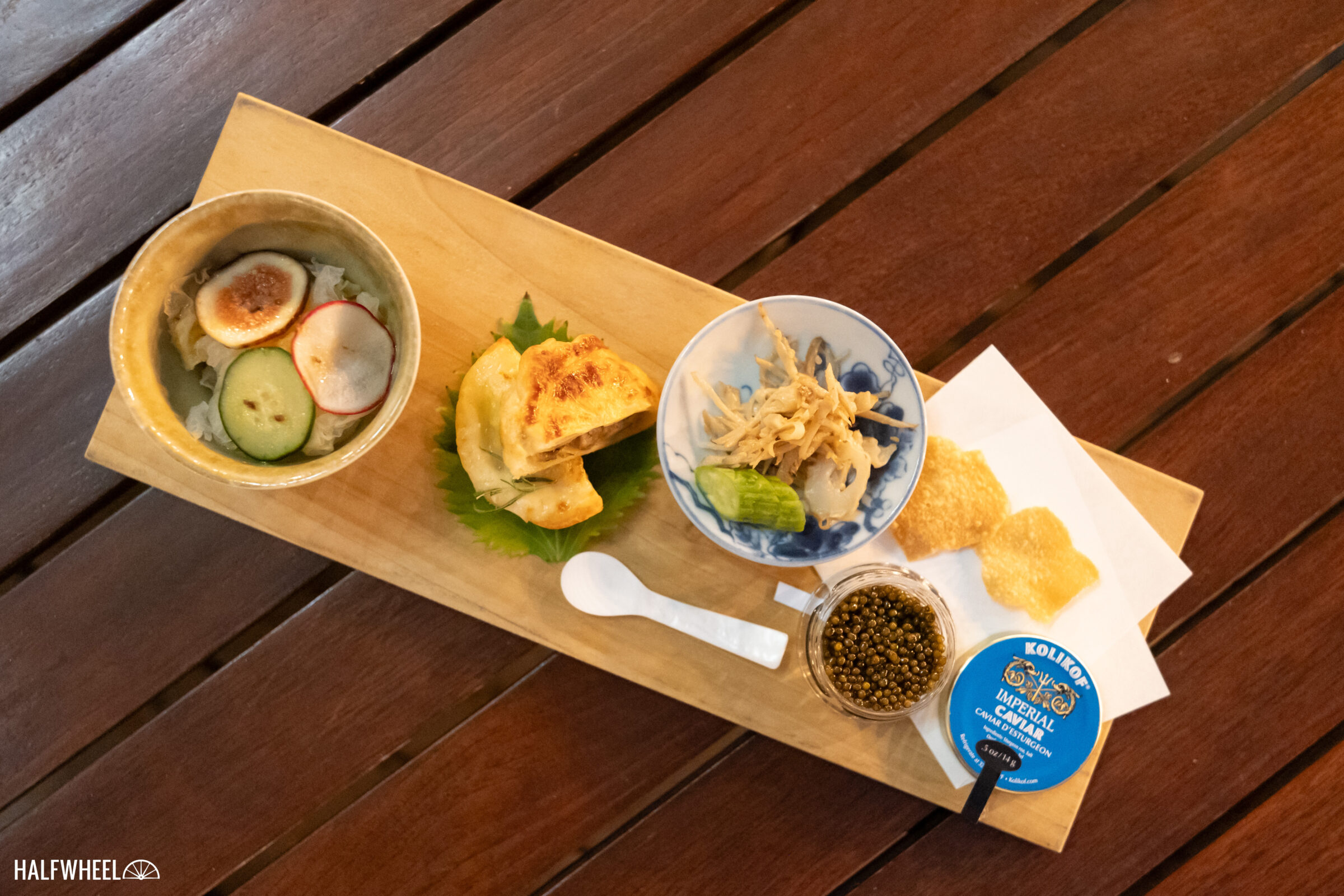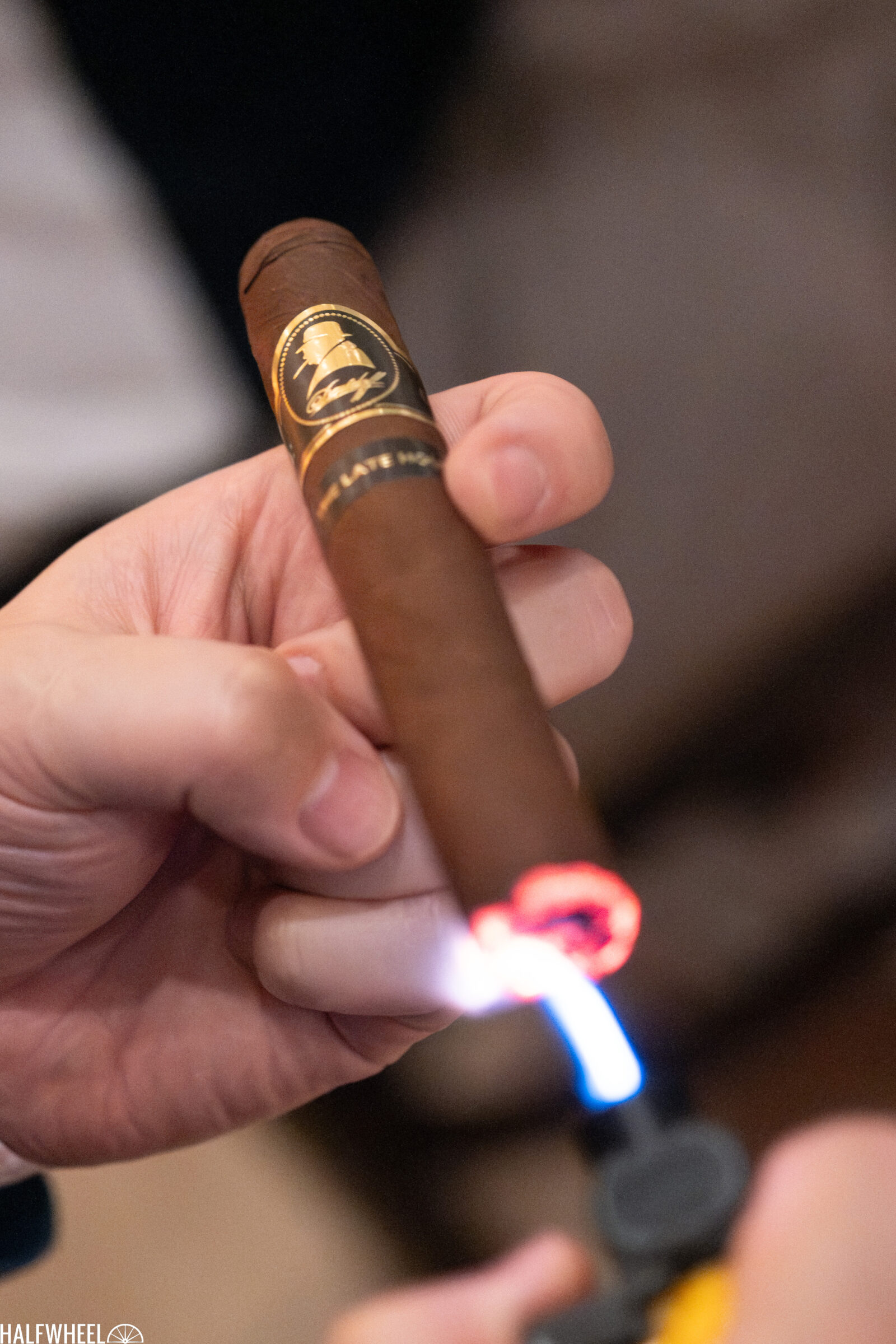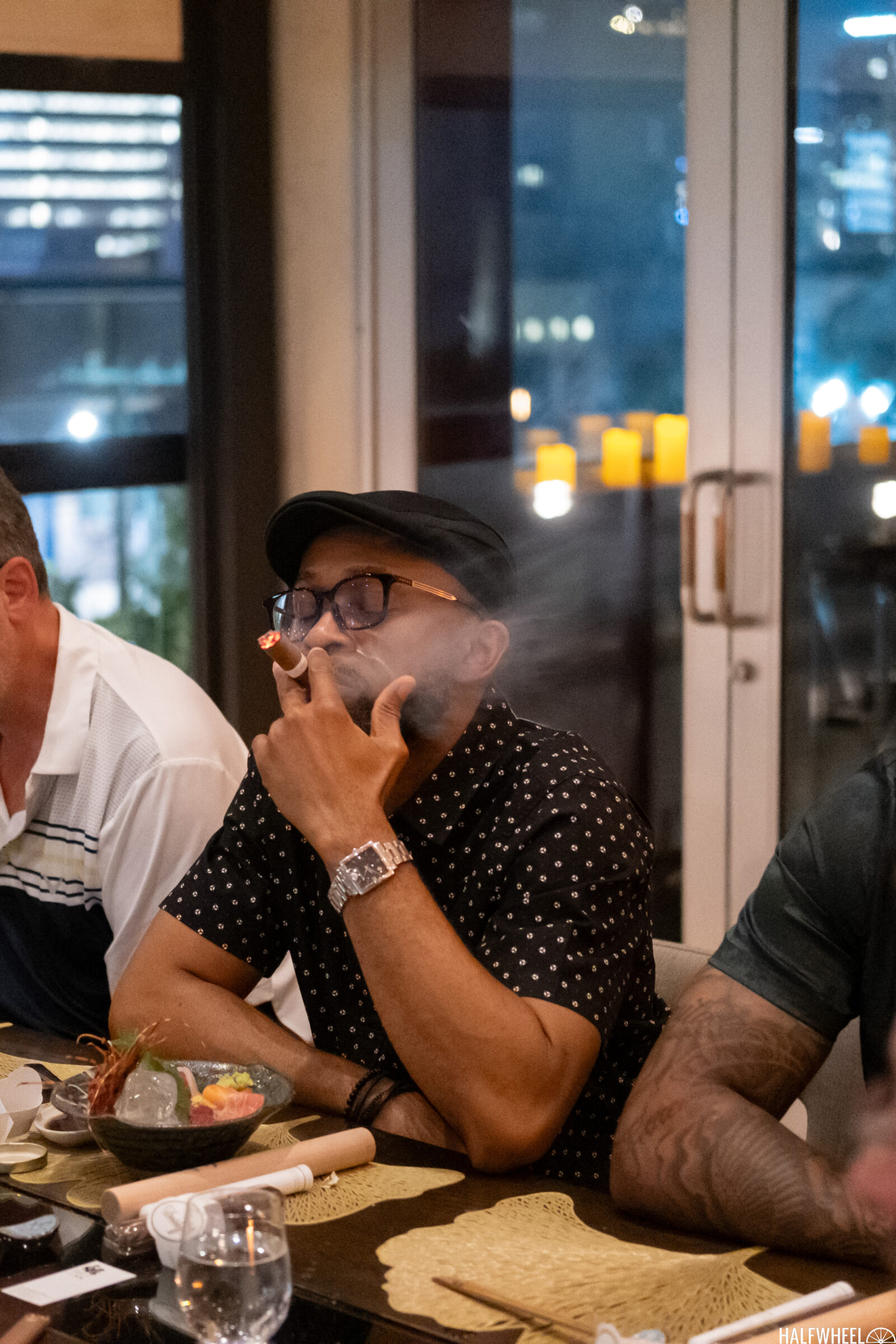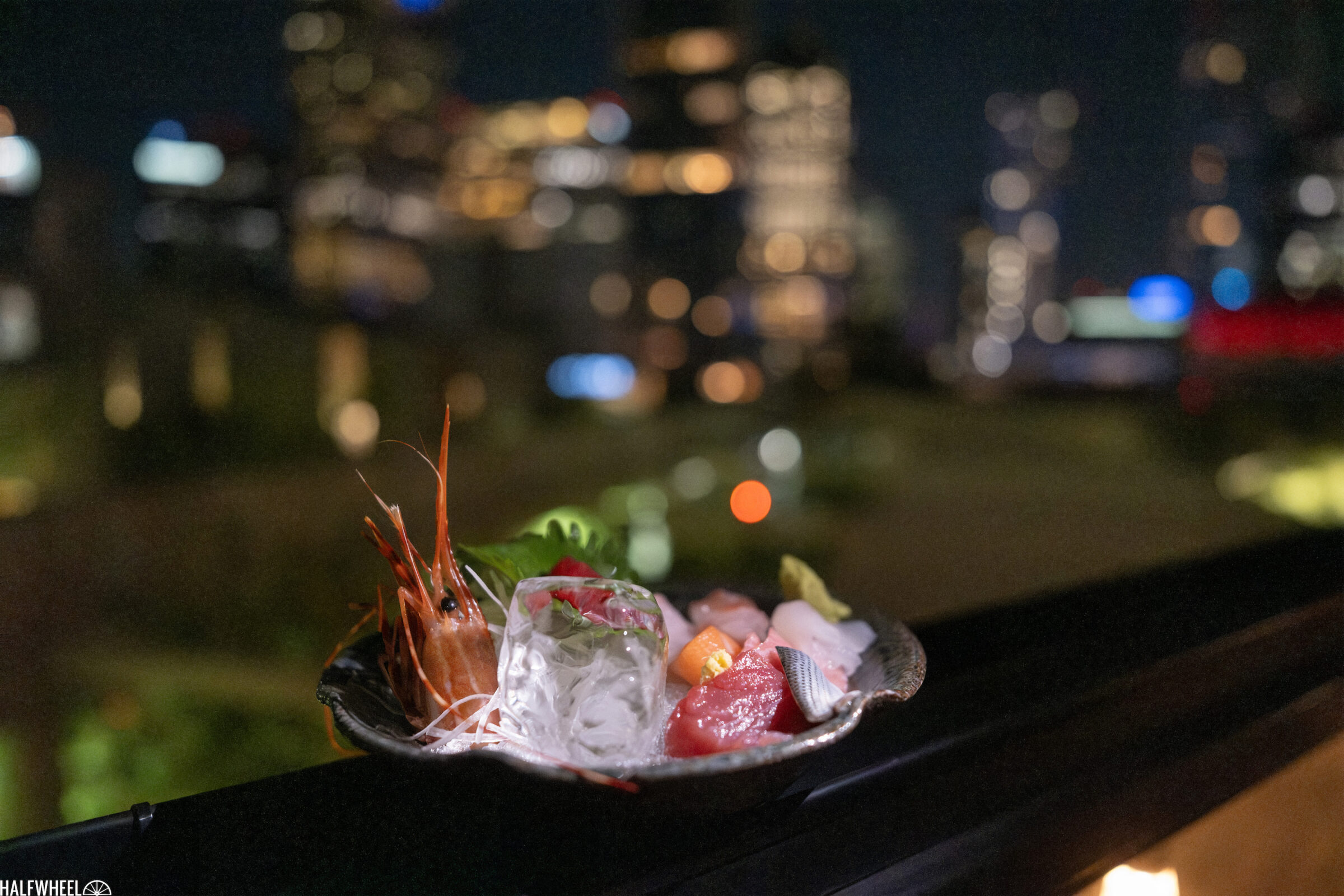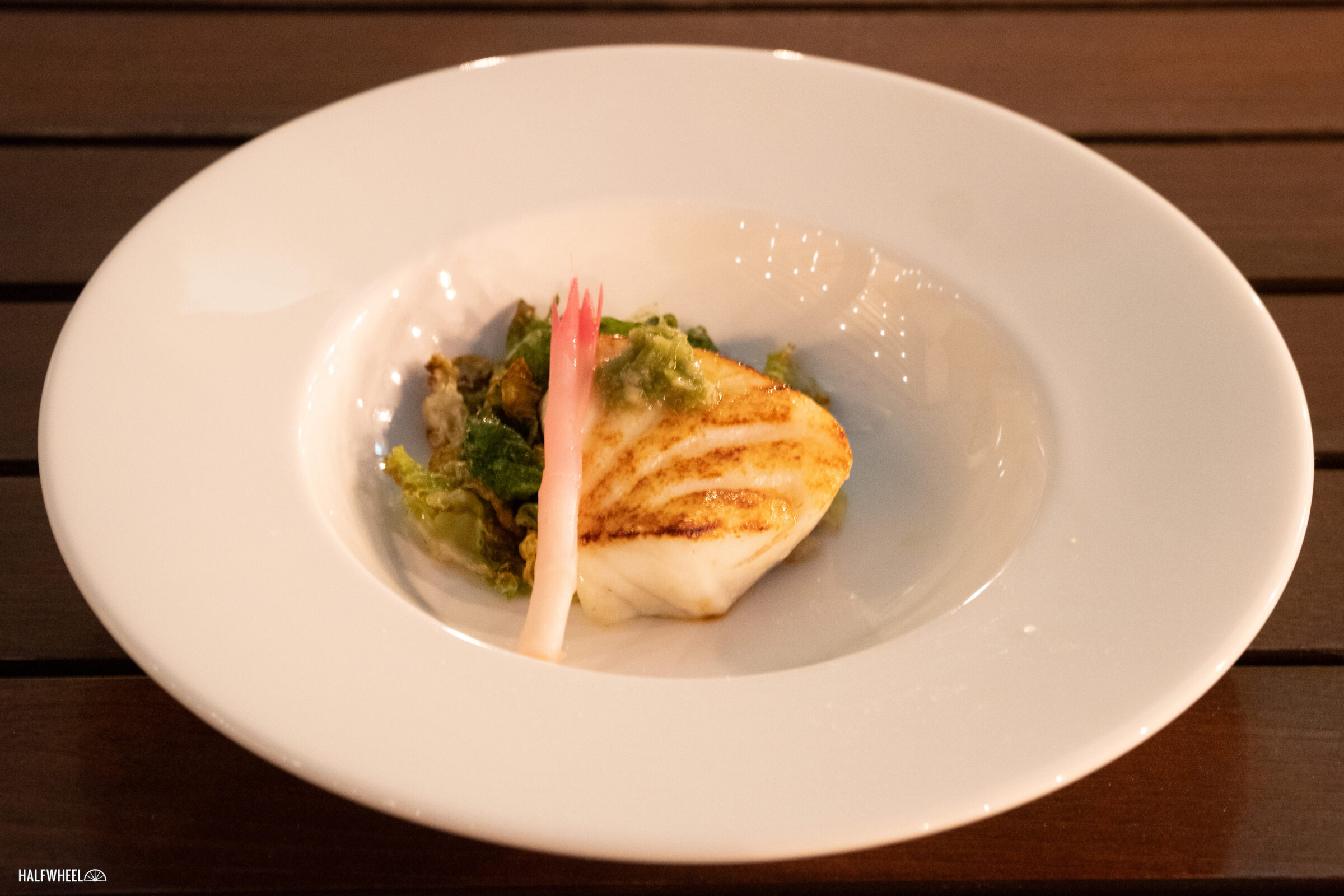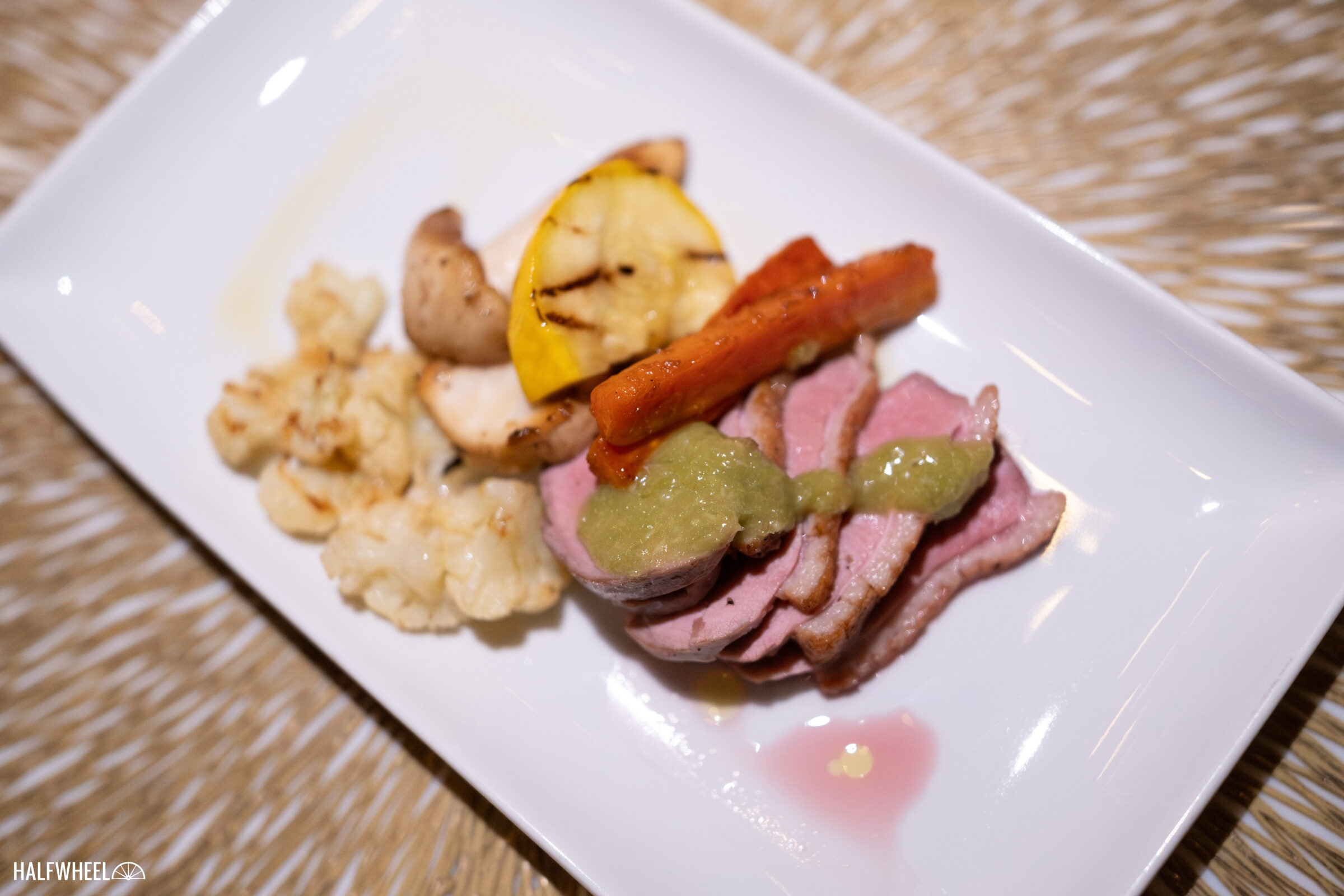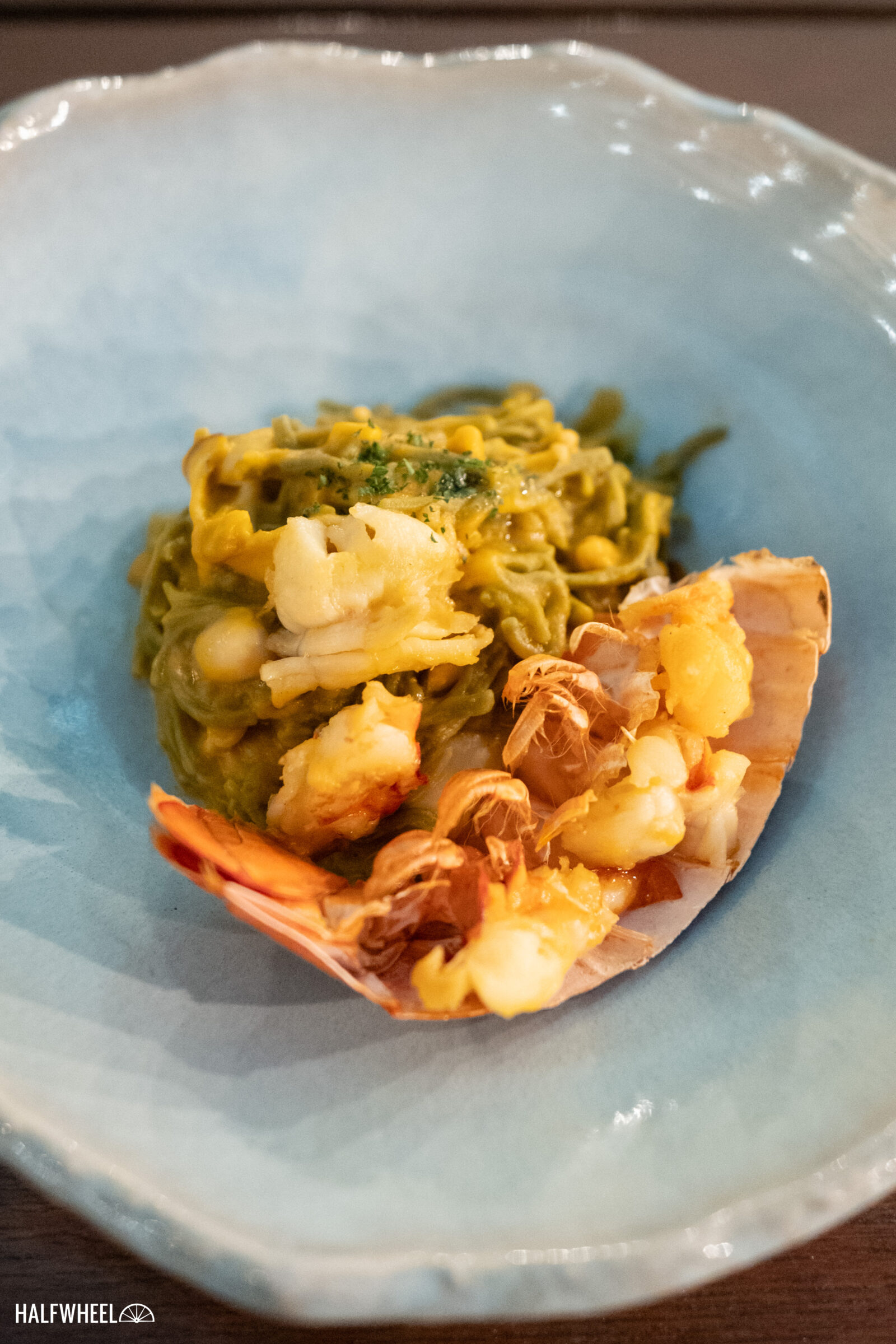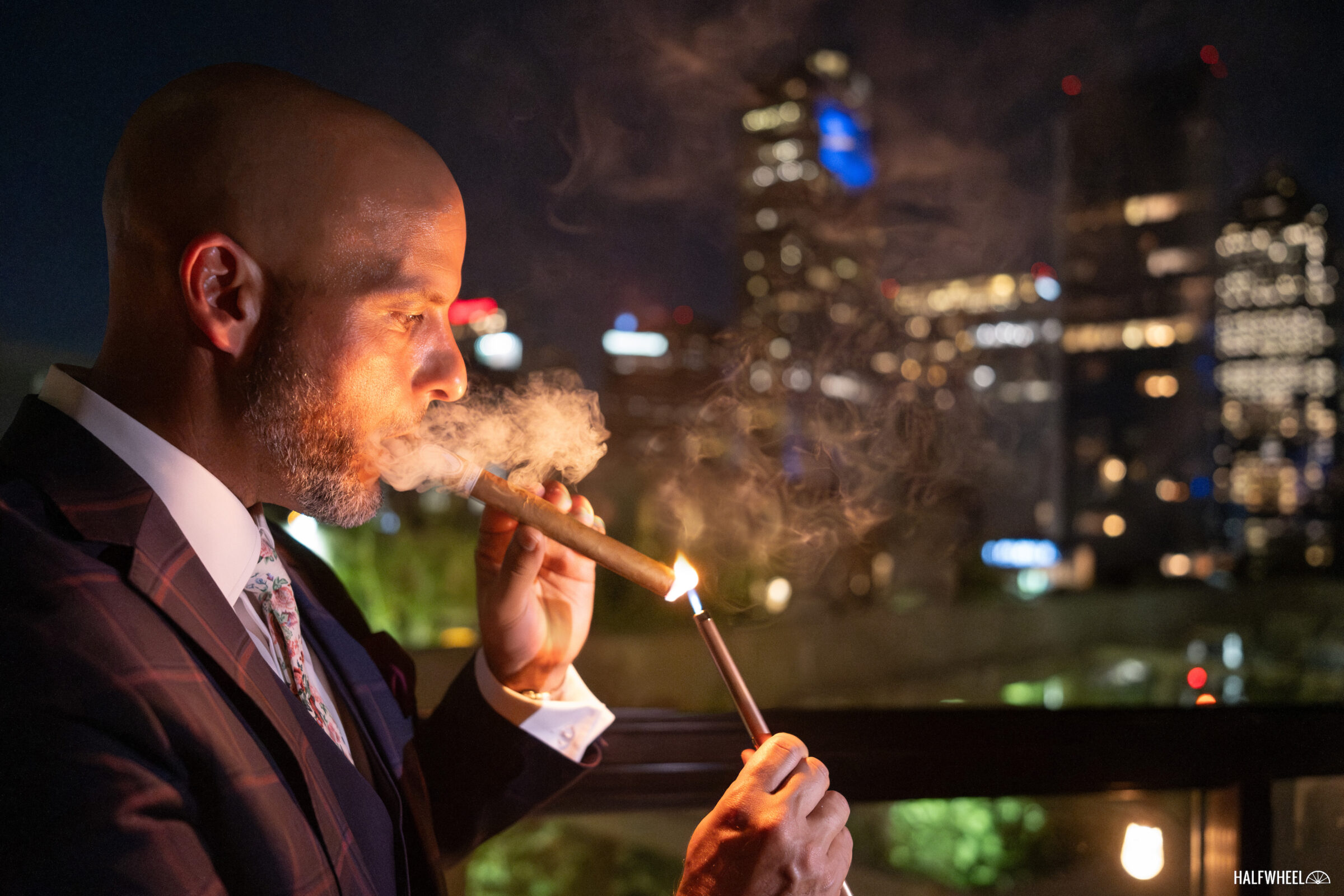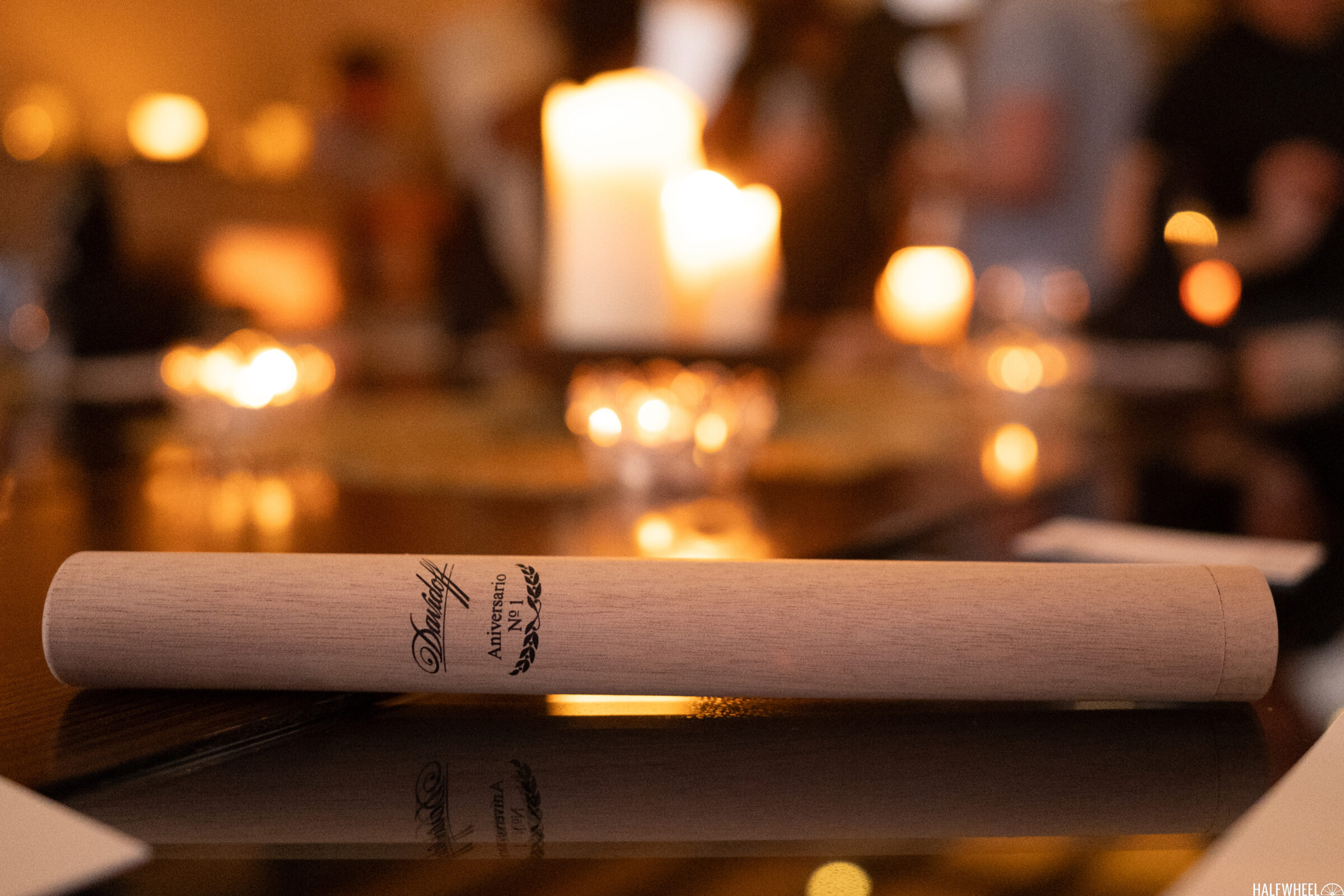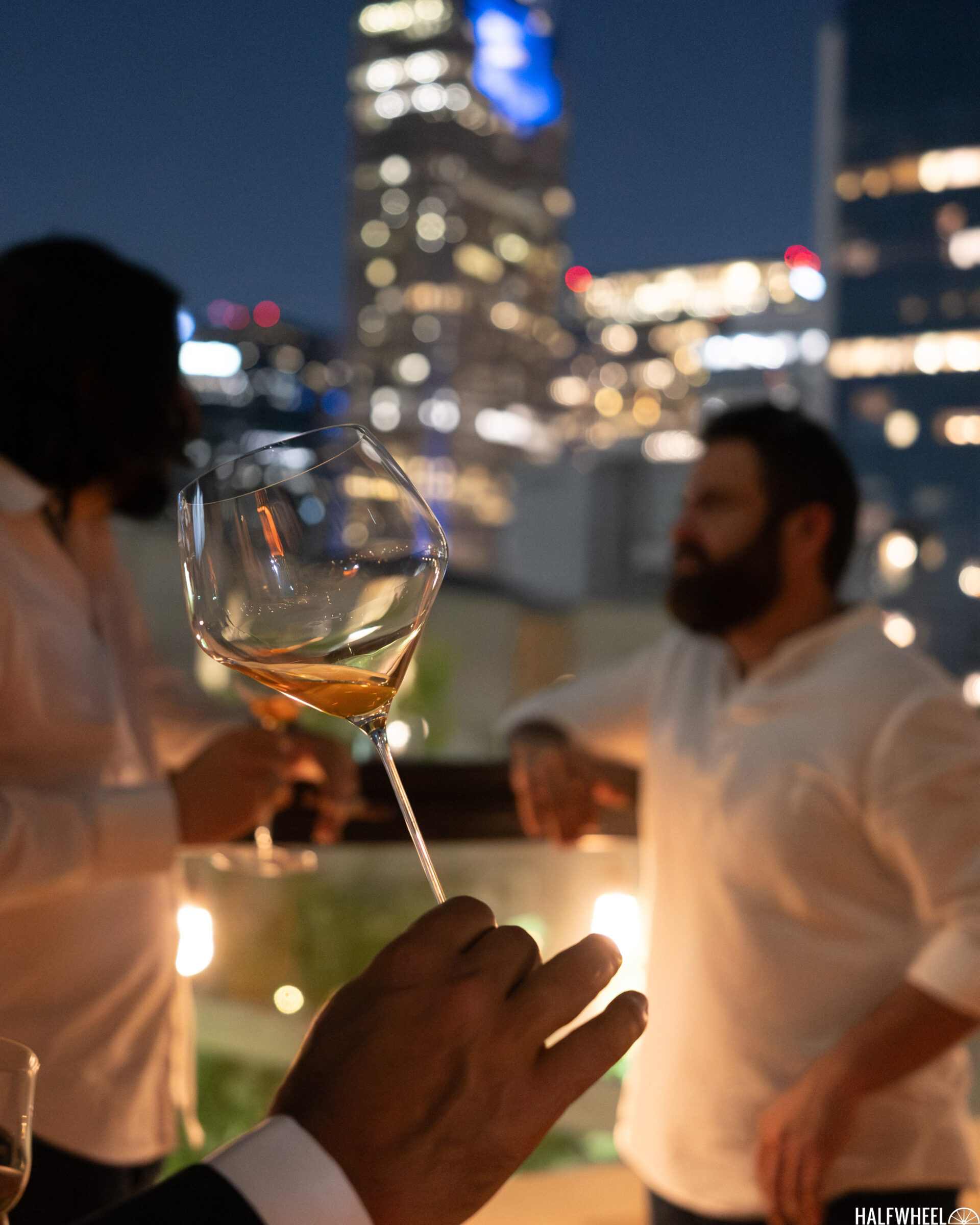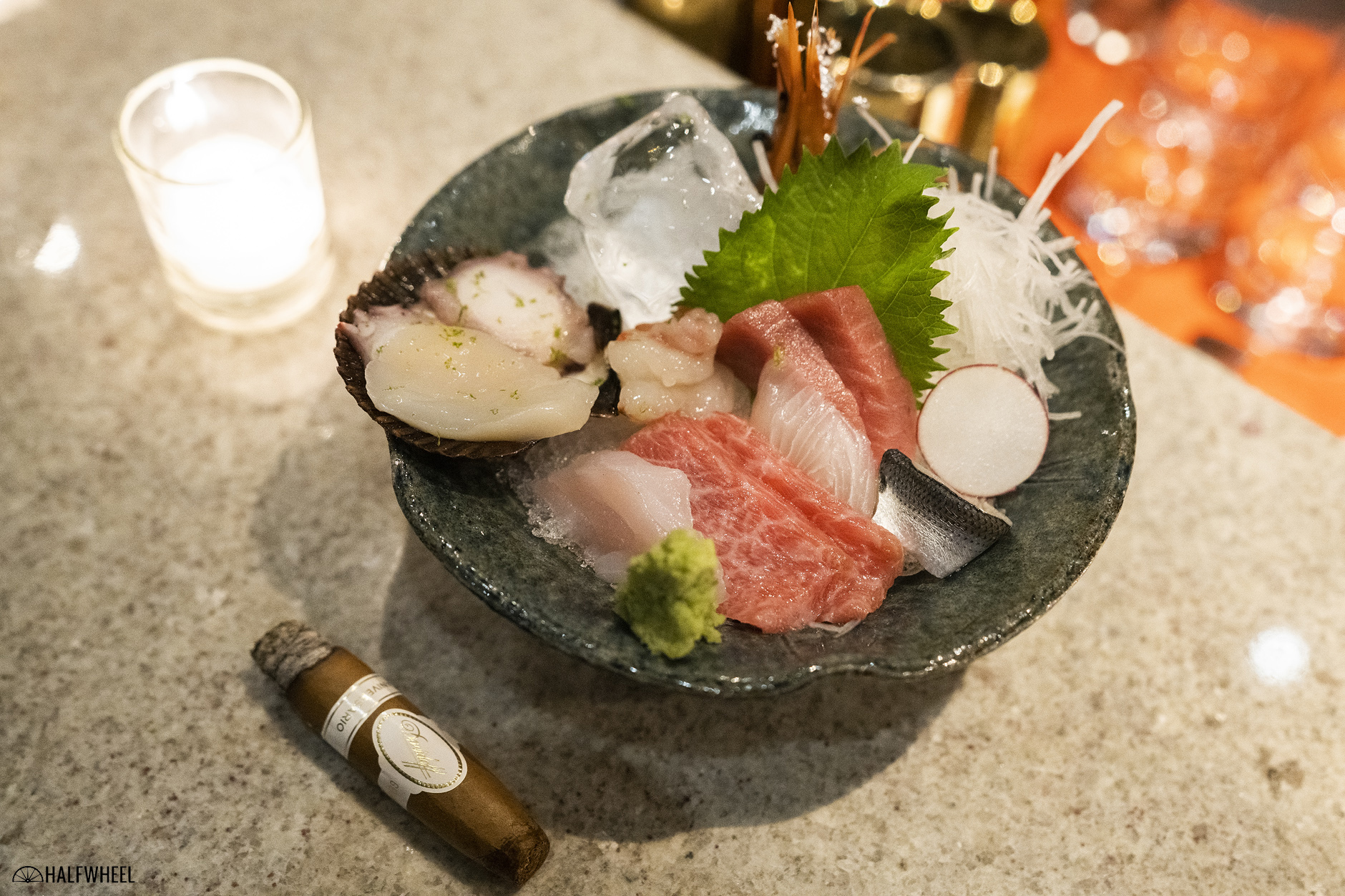When is the right course to light up an 8 2/3-inch cigar?
Yes, yes. Many of our readers would say, any course. But it was an interesting question for Eddy Guerra, senior brand manager for Davidoff, to figure out.
This is the third event we’ve been a part of involving Davidoff and Tei-An, a Dallas-based soba house that seems to be the de facto favorite restaurant of halfwheel. Normally these dinners have followed a pretty similar rhythm: start with a mild cigar, move onto something fuller and then pass out the featured cigar after the final savory course. For better and worse, the 2023 edition of the Davidoff x Tei-An dinner was centered around the upcoming Davidoff Anviersario No. 1 Limited Edition, a cigar that measures too long to be handed out to guests at 10:30 p.m.
For more information about Tei-An, I’d recommend reading about the 2019 or 2021 dinner.
For the last decade, Tei-An has simultaneously been the place that I take out-of-town visitors and also a place that I go to when I just want to smoke a cigar by myself. It’s not a cigar bar; rather, it’s a restaurant centered around soba, the quintessential Japanese noodle. Unbeknownst to most of Tei-An’s guests, the restaurant has a secluded, air-conditioned patio that has a great view of the Dallas skyline and cigar ashtrays available for those who ask. Getting up to the patio, that’s a different story involving a finicky elevator.
When asked to explain soba, I tend to use the video above. It shows the art of making soba. Buckwheat flour, kneaded into dough and then like so many other parts of Japanese cuisine, cut into thin slices using a specialty tool. Soba is unforgiving and naked. It must be made daily—meaning a soba house like Tei-An must make it every morning—and like most noodles, on its own soba is quite plain, more texture than flavor. Unlike most noodles, soba is traditionally served alongside dipping sauces and not drenched in heavy broths or sauces from the kitchen.
The end result is that soba is an inherently simple end product but one that requires an extreme amount of nuance to get right. And even if you get it right on Tuesday, that has no bearing on what Wednesday will bring. In that regard, it seems similar to baking or making pizza.
Tei-An was founded by Teiichi Sakurai, who is still found at the restaurant every day. On a regular day, Sakurai is directly responsible for the sushi: both the cutting of fish for sashimi and the incredibly soft press he applies to nigiri. On select Thursdays, the day of the week Tei-An typically hosts special dinners, Sakurai’s creativity comes out in the food created for omakase menus.
As Americans, we have butchered the meaning of omakase. My understanding is the omakase should involve you sitting down at a restaurant and simply trusting what the chef sends out, which is adjusted based on what the chef thinks you will like. In America, we’ve seemingly used omakase to replace the concept of a tasting menu. Whatever you want to call what was served, looking over the menu and pictures from a week ago is making me hungry.
The evening started with the Davidoff Aniversario Short Perfecto and Billecart Champagne. The idea was to give guests a short cigar, one that would be reminiscent of the featured cigar, to get the evening started. After a half hour of chatting, guests were seated as the sun began to go down.
First course, amuse bouche. (I just finished a book on the etymology of food and food terms, I am reminded that amuse bouche has a somewhat unique history.)
Second try. First course, amuse bouche: soba quiche, autumn mushroom pie and Oscietra caviar. Oscietra, more commonly known as Ossetra.
Not mentioned on the menu description, the item on the far left: white seaweed salad, a Tei-An staple and a dish I always order for first-time Tei-An diners. It’s a texture thing. One note, when ordered off the regular menu it will just come with cucumber.
Before the next course, I introduced Eddy, and he proceeded to talk through the other cigars, which were handed out to guests. The recommendation was for guests to move onto the Winston Churchill Late Hour Toro, though Millennium Blend was also given.
The reason Late Hour was given the nod was due to the whisky pours that were lined up, each guest would receive pours of the following:
- Highland Park 18
- Highland Park 25
- Highland Park 30
- Highland Park 40
- Yamazaki 18 Mizunara 100th
Some guests started their second cigars, others were still finishing their first, and others wanted to wait until after the next course: otsukuri.
Technically, otsukuri is not just a bowl of sashimi, it’s a curated serving of sashimi. Described on the menu as: Nova Scotia Tuna & toro, Suzuki, Mad and Canadian Shrimp. Anyone who enjoys shrimp should try the head at least once. I understand it’s not for everyone, but there’s something to be had there. Most non-Asian restaurants in America aren’t going to present the shrimp heads, but if you happen to see them, go for it.
Course Three: Sea. “Grilled Suzuki.” That would be sea bass.
Over the years, I’ve noticed that grilled Brussels sprouts are a sign that you are getting one of the Tei-An kitchen’s better dishes of the evening. The Brussels sprouts tend to come out with either only large format dishes—tuna collars or tomahawk steaks—or special dishes like this one.
The Japanese believe in contrast land and sea dishes, though otsukuri doesn’t seem to count for some reason. Whatever the case, Course Four was the one I was most interested in, to the point that I asked if an extra portion could be set aside for me to try. “Maple Duck & Matsutake”
Duck is something that is on Tei-An’s regular menu, but not this duck. Sweet, savory, salty, spicy, soft, crunchy, crisp. I wish I could have more.
In fairness, I also asked for Course Five: Lobster Soba. I’ve had different variations of lobster soba at Tei-An over the years, this one was certainly the most colorful: green soba noodles almost acting as a pillow for half of a lobster to rest on. Unfortunately, I didn’t get to try this, but I imagine it was quite good.
Course Six: Sweets. Triple Chocolate Mousse. It looks like our photographer may have enjoyed too much soba and forgot about this. I did have some of the dessert—which means clearing the table—it was not what I was expecting. Instead of some heavy monster of a dessert, it ended up being rather petite and quite airy. It would have paired quite well with the final third of a cigar, especially after four or five ounces of neat whisky.
The guests of this dinner—there were just 11 of them—ranged from cigar novices to at least one regular reader of this site who doubles as a cigar collector. That dynamic makes these dinners somewhat interesting: Davidoff’s contribution to this dinner was centered around the idea that the people at this dinner got a cigar before any other consumers or retailers, none of them—as far as I could tell—lit it up during dinner. This wasn’t the crowd for “hey, you are getting these cigars before anyone else.”
Granted, Eddy Guerra told the guests that he’d recommend lighting it up when they could be alone and focus on the cigar. He also shared an incredible nugget about the original Davidoff Anviersario No. 1. The original cigar was introduced in 1986 to celebrate the 80th birthday of Zino Davidoff. Outside of the unique wooden tubo and weird size, I thought the most interesting thing about the cigar is that it was perhaps the last new Davidoff made in Cuba.
Guerra explained that Zino Davidoff wanted the cigar to be so long so that he could light it up late at night while he was still 79 and smoke it for the first couple of hours as an 80-year-old. It’s something I’d never considered, nor would ever consider doing for myself.
I suppose that’s the whole point of evenings like this. Yes, I could make dinner, pour myself a whisky and smoke a cigar; or I could go out and not only experience special food, special whisky and special cigars, but also learn a thing or two about the cigars and the people sitting next to me. So long as we can keep doing the latter, we’ll keep doing these events, though if history is any indication, the next one won’t be until 2025.
Photos via Joseph Mark Photography.

